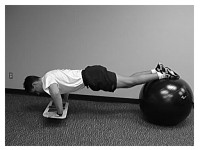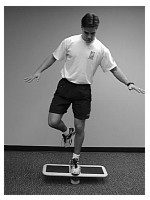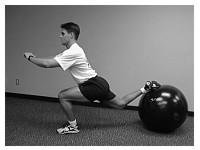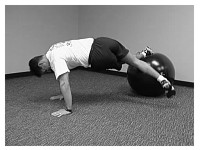






 |


Summer Choices
Hockey-Specific Cond...
Prevent Ankle & Knee
Yr-Round Train. Sched.
Post-Season - May 31st
Quickness & Agility
Balance Training
Improving Player Dev.
Flexibility for Skill
Overload Skating
Proven Training Tips
Anaerobic Running
Youth Strength Training
About Peter Twist

Camps
SportConditioning.ca
By Peter Twist MPE, BPE, CSCS © 2000 Peter Twist Peter Twist is President & CEO of Twist Conditioning Inc and the former Coach of Conditioning & Player Development for the Vancouver Canucks. He has authored dozens of articles on athlete development in scientific journals, written two books on conditioning and is currently finishing a third on core stability. Peter Twist runs weekly sport-specific conditioning camps for professional athletes, high school students, and adult recreational athletes, as well as one-on-one training and team clinics. He can be contacted through www.sportconditioning.ca or 604-904-6556. Successful sport technique execution requires integrated coordination of your entire body. Your body a linked system that works together to coordinate athletic actions. Shooting a puck relies on the legs, torso and upper body muscles, all working together and contracting in the correct sequence. Your body functions as a linked system in everyday life too - such as when bending over to pick up a baby, lifting the baby overhead to produce a smile. This is dependent on leg, torso and upper body strength - both prime movers and stabilizing muscles. Your body functions together as a unit, with muscles firing sequentially to produce the desired movement. Some muscles must contract to help produce movement, others contract to help balance the body, while others contract to stabilize the spine and hold it in a safe, neutral position. Still other muscles will kick in each time your body recognizes a shift in position or to correct an error - such as detecting a loss of balance. However, typical strength training attempts to develop the body with a piece meal approach, isolating specific muscle groups. Worse yet, this is often done with the body completely unloaded, sitting stationary on a machine while moving one isolated body part through a controlled range of motion, usually in a strict linear, straight ahead motion. This type of training is typical of the dysfunctional exercise paradigm of the '90's. It has so little to do with real life it this has left participants ill prepared to meet the demands of life and sport. Participants are often led to injury and lowered performance from this non-functional training. That is why very simple demands such as quickly stopping in tennis, lateral movements on a basketball court, running backwards to catch a ball and even random everyday activities like playing tag with a child will result in injury. You are better off training with an unstable (round) surface. Your most important feats of strength and balance will be required in unstable and unpredictable environments - slipping on icy stairs, lunging to catch a falling child, withstanding a check to continue driving to the net while receiving a crisp pass. These real life conditions require contributions from all muscle groups. Each joint and muscle senses position in space and changes to other linked joints and muscles to react and produce the appropriate action. This linked system is a kinetic chain and produces functional movement safely. This is also called proprioception training. Training with Stability Balls and Balance Boards build your body together as a unit. These tools produce improvements that support athletic, dynamic movements such as sprinting full out down the boards, cutting around two defenders, then suddenly stopping on a dime to cut to the center of the ice for a scoring opportunity. Improve performance and reduce the risk of injury. Build stronger joints. Improve balance. Build a strong back and strong abdominals. Improve coordination. This is all accomplished with balance training. Hockey is one of the most unpredictable, random, reactive sports, played on ice, with full contact. Obviously balance and stability are key components to successful maneuvers. But does anyone train and develop these attributes or are they just hopeful they received some genetic gift of natural balance and stability? The bottom-line? You are only as strong as your weakest link - for most people this is core or torso strength and balance. Balance training builds from the core out to the periphery, accommodating your upper and lower body while turning your core into your strength. A stronger core is your 'speed center' and 'strength center' - most movements are initiated and supported with the core muscles . Best of yet, stability ball and balance board drills are both fun and challenging. Take advantage of these powerful tools and get to the core of the matter with unstable environment training! Exercise 1: Balance board push ups with feet on stability ball  Exercise 2: Single leg balance board exercise  Exercise 3: Single leg squat with rear foot on stability ball  Exercise 4: Abduction/adduction hip rotation with one foot on stability ball  |
 project
project© 1999 DavidSport Inc. All Rights Reserved. Disclaimer